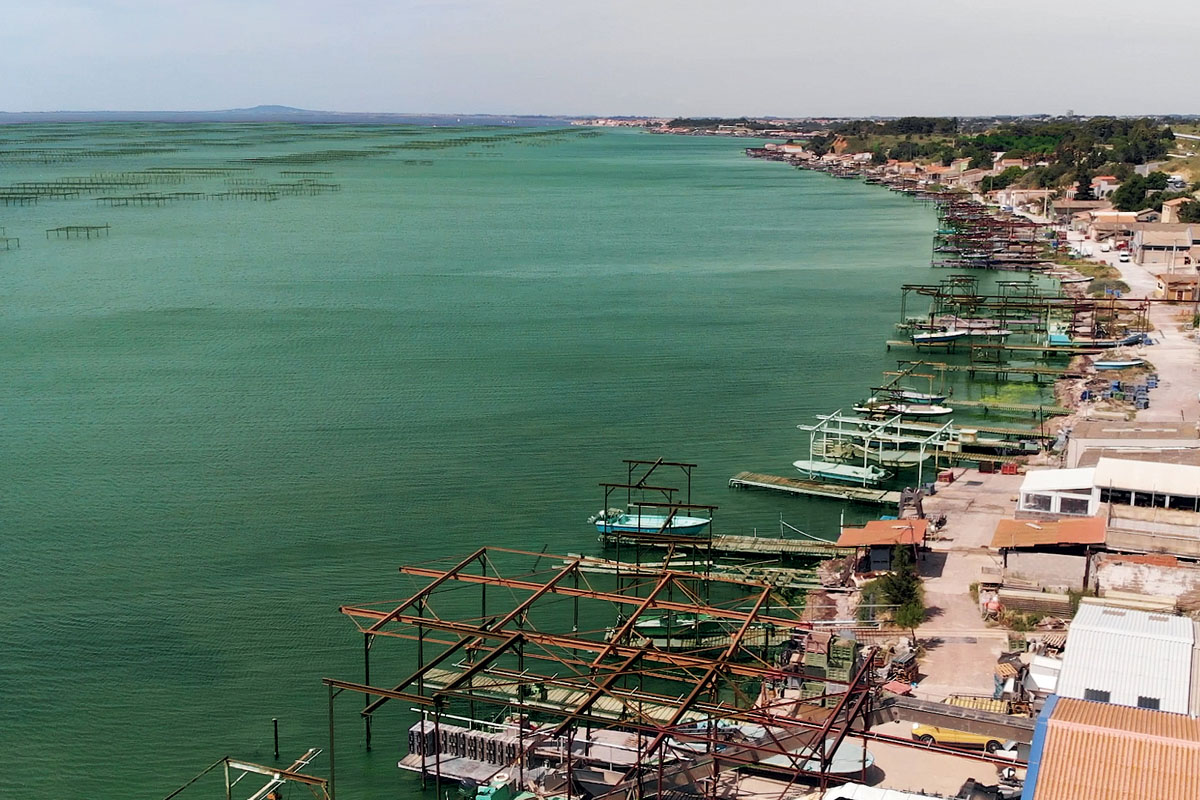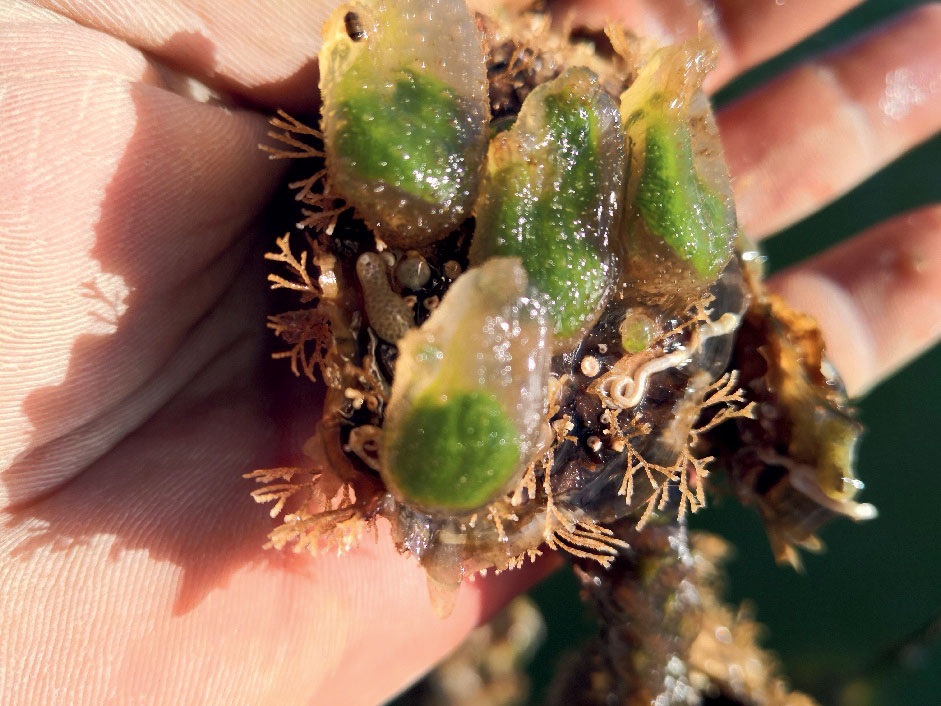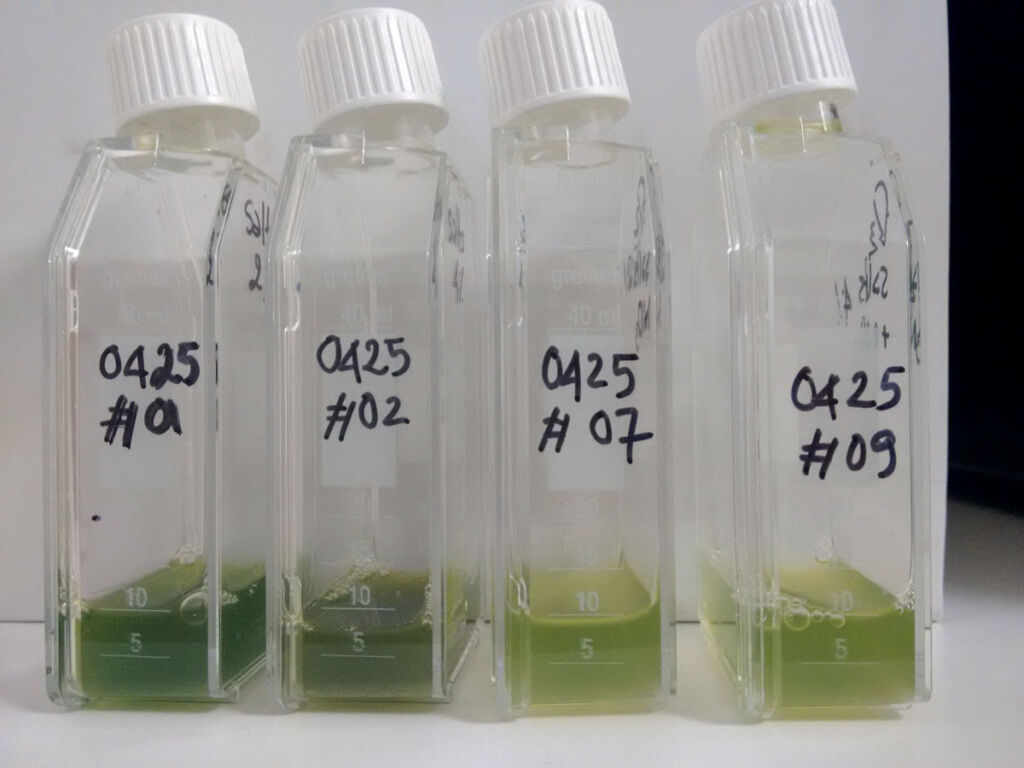[LUM#16] The mysterious Thau bloom affair
Waters suddenly turning green, oysters losing weight and dying in cascades, a disturbing disappearance... Strange things are happening in the Sète lagoon at the end of 2018. Curse or natural phenomenon? To unravel this mystery, the "Eaux vertes" project team investigated throughout 2019 to flush out a tiny, tiny, tiny culprit. Name? Picochlorum.

December 2018, the people of Sète can hardly believe their eyes. The change happened in just a few days: the Thau Basin turned green. Not water-green or greenish, no! Green! It's quite a shock, given that local oyster farmers have already been watching helplessly for two months as their oysters lose weight. The lagoon's monitoring labs were buzzing with excitement: "In the canals, everywhere, the water was green," recalls Béatrice Bec, a researcher at the Marbec marine biology laboratory. A bloom like that in the middle of winter was impressive, but above all completely unprecedented in the Etang de Thau".
A disturbing disappearance
In expert language, a "bloom" refers to the sudden, large-scale efflorescence of a micro-algae within an aquatic ecosystem, generally favored by temperature rises and/or nutrient inputs, and responsible for this green color. Béatrice Bec and a team of scientists, includingIfremer researcher Franck Lagarde, quickly set up the " Eaux vertes " project to understand the causes of this imbalance. From January onwards, samples were taken every 15 days at three different points in the lagoon and at two different depths. "The entire lagoon was affected, with concentrations never before seen here: a billion micro-algae cells per liter of water sampled! That's a lot of suspects...".
What's even stranger is that the analyses reveal the almost total disappearance from the lagoon of diatoms, a group of micro-algae that are the main food of oysters, filtering the water and retaining it in their gills. Instead of diatoms, biologists are observing the massive presence of an unknown phytoplankton. It looks like a tiny green ball, two to three micrometers in size ," explains Béatrice Bec. This unicellular micro-algae is so small that it can't be held by the oysters' gills, which wouldn't be able to digest it anyway because they don't have the right enzymes." So much for the mystery of skinny oysters, but the culprit still has no name.
Such a small culprit
And for good reason: the micro-algae is so small that biologists can't identify it under the microscope. To help them, they turned to molecular analysis, and it was CNRS researcher Ariane Atteia who succeeded in identifying the culprit. Her name: Picochlorum! "This picophytoplankton has already been identified in the Adriatic Sea, around Roscoff and in the waters off the Côte Vermeille, but never in such proportions. It can live in a wide range of temperatures and salinities, which has enabled it to develop in winter conditions. But why such a bloom, and why now? What exceptional factors led to its emergence? These are the questions that haunt the inhabitants of the lagoon as the weeks go by, the waters remain green and the oysters thin.
To answer this question, the scientists looked at the data compiled by REPHY, Ifremer's phytoplankton observation and monitoring network responsible for monitoring the lagoon, and compared the 2018 analyses with those of previous years. First observation: summer 2018 was marked by malaïgue, "bad waters" in Occitan. " Malaïgue is a bit like the lagoon having a liver attack from being overfed with nitrogen and phosphorus. These anthropogenic inputs encourage the over-development of macro-algae, which then degrade, leading to an imbalance in oxygen levels in the absence of wind and in very hot weather. This malaigue has destabilized the diversity and abundance of phytoplankton communities," explains Béatrice Bec.
A synergistic partnership
With the September winds chasing away the malaïgue, the story could have ended there, except that 2018 was also a very rainy year, marked by a succession of storms and thunderstorms. Once again, these natural phenomena favored the addition of nutrients to the lagoon. "In retrospect, we observed that from August onwards, Picochlorum was present in the lagoon, which had already been destabilized by the malaïgue. It was able to take advantage of a synergy of exceptional climatic and environmental events that ultimately led to this bloom."
In the end, the lagoon's humans, like the oysters and diatoms, had to wait a year for their ecosystem to naturally return to the deep blue of its waters. As for Picochlorum, it is serving its sentence in the Marbec laboratory, where experts are taking it in turns to make it talk: "We have isolated a strain and are testing its physiological capacities, its nutritional requirements, its preferred temperatures...". Another objective: to develop molecular tools to probe the lagoon and potentially set up a warning system against this tiny but resilient invader. " We've even had fun depriving it of oxygen... It's doing very well," concludes Béatrice Bec.


* Marbec (UM - CNRS - IRD - Ifremer)
UM podcasts are now available on your favorite platforms (Spotify, Deezer, Apple podcasts, Amazon Music...).